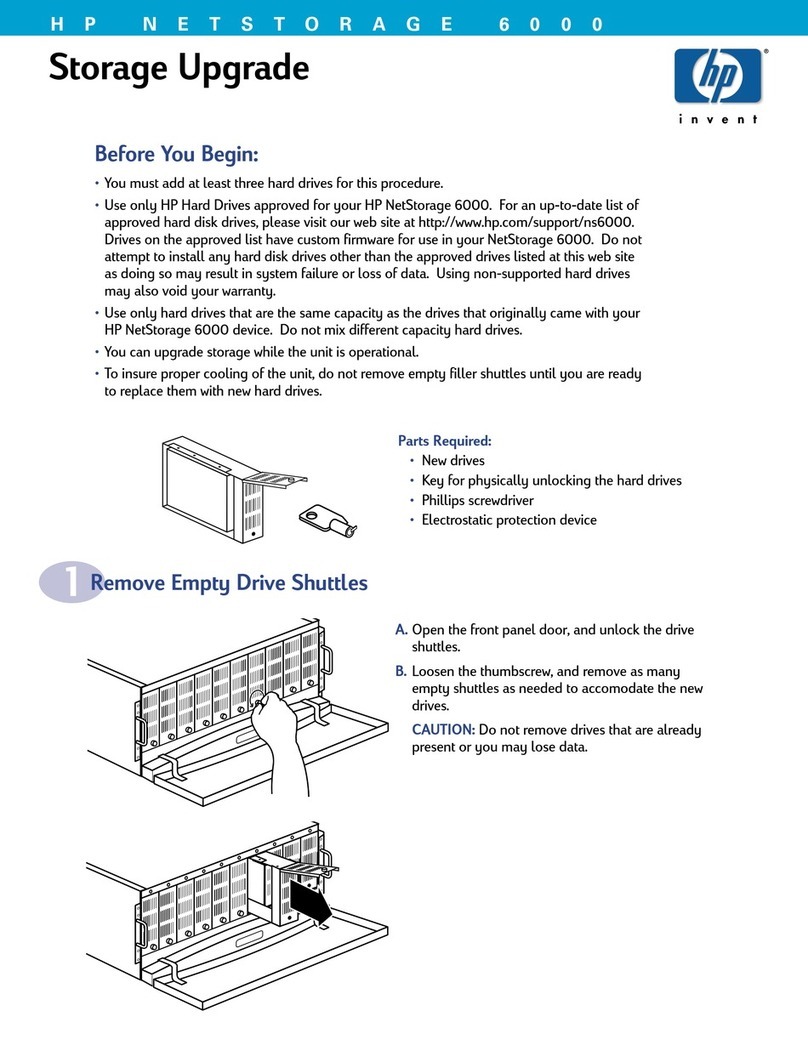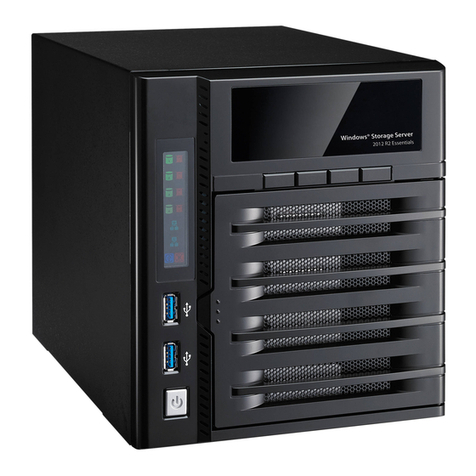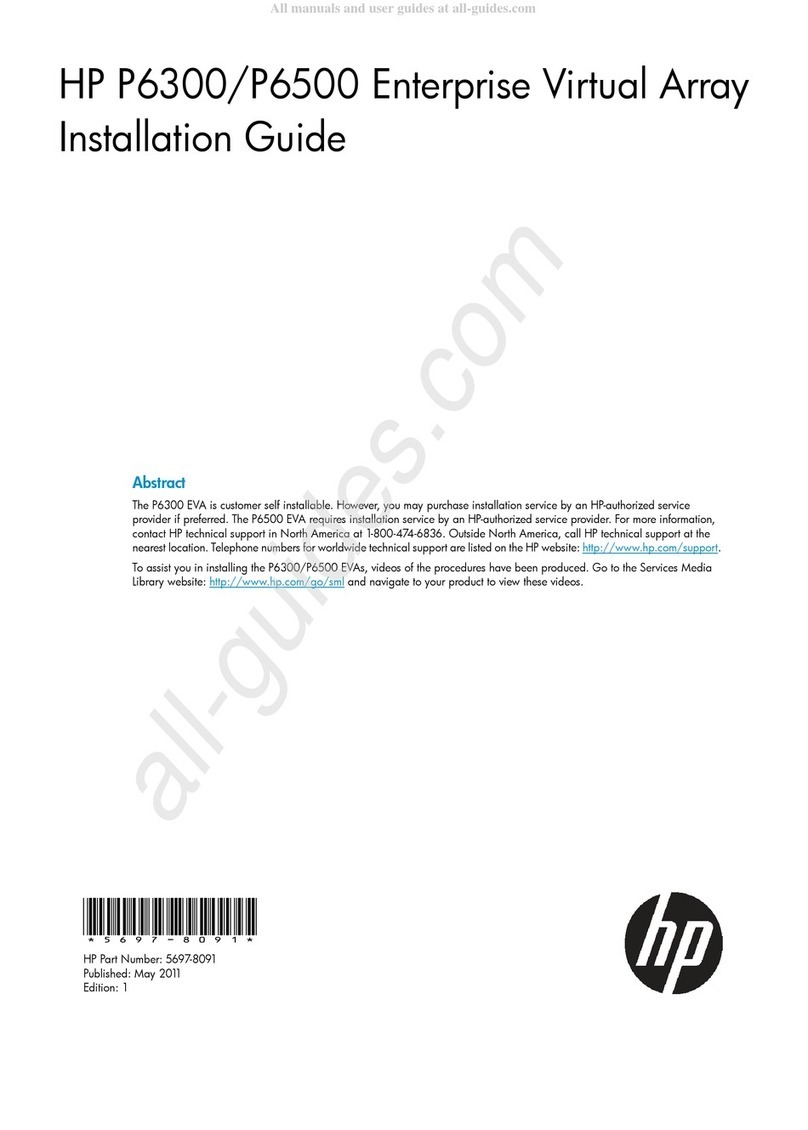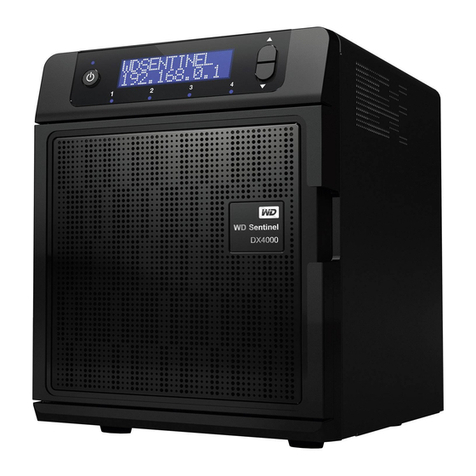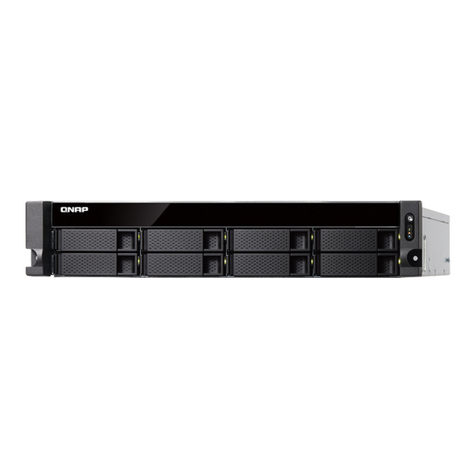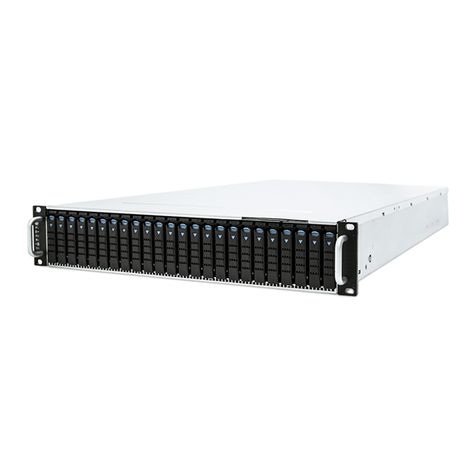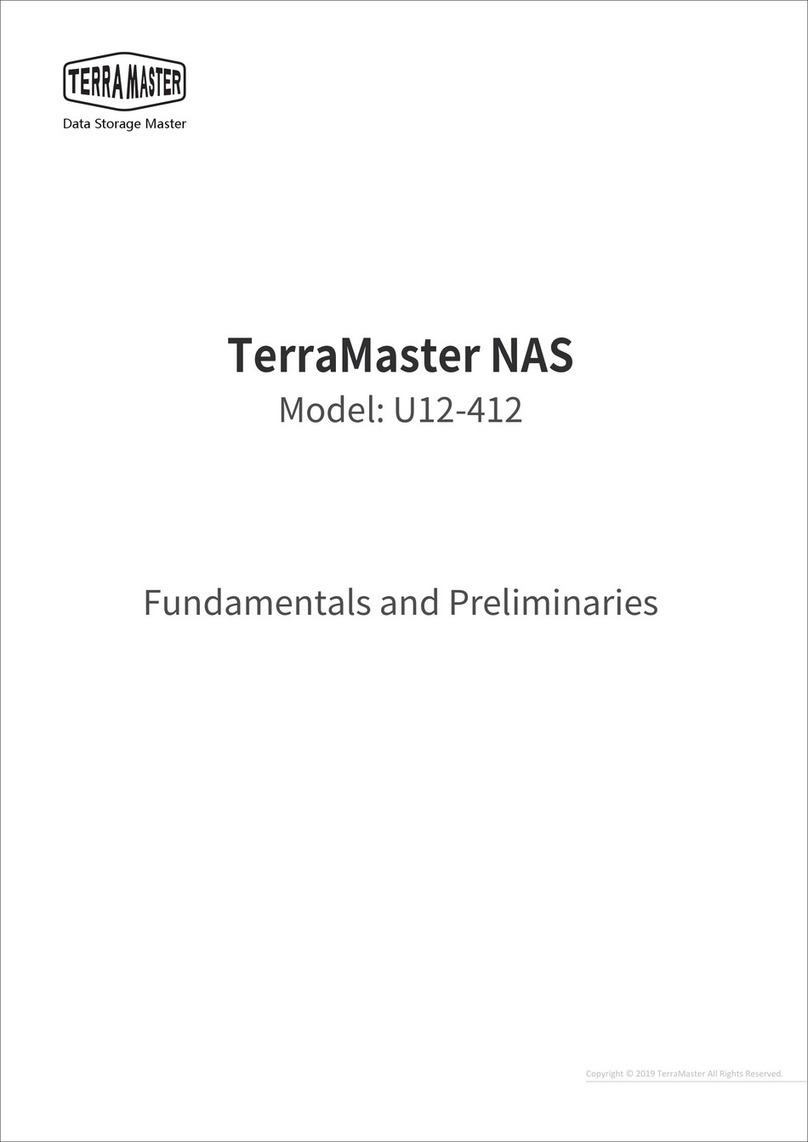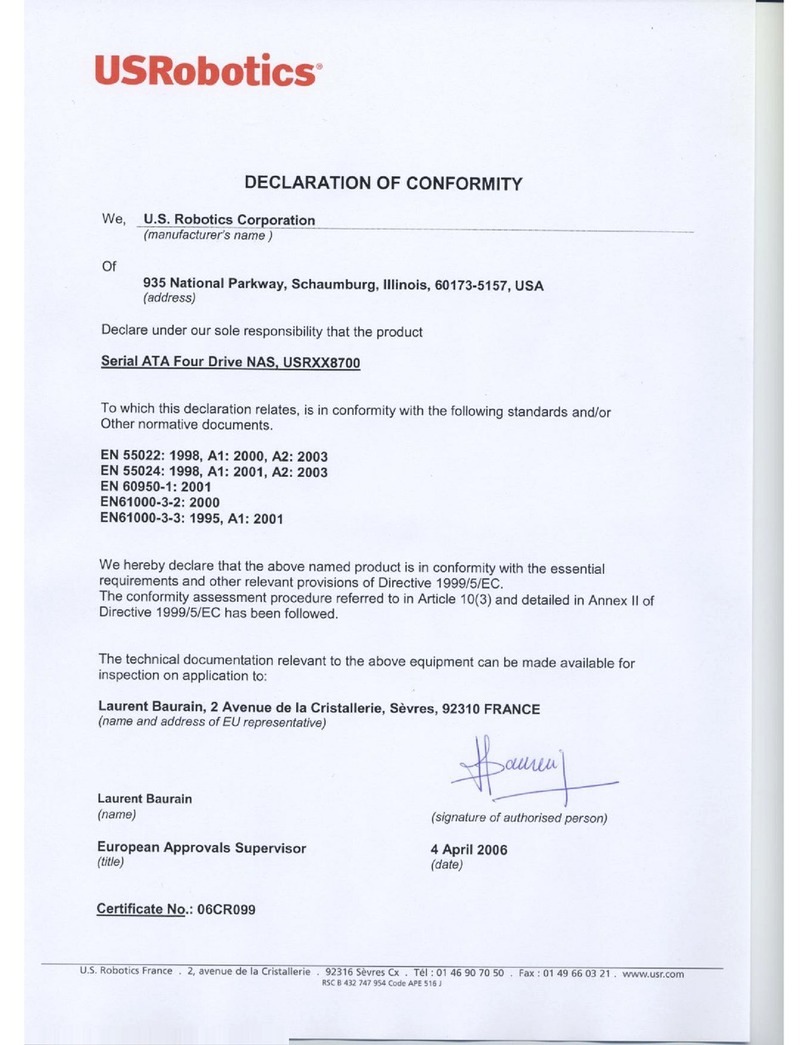Imation NEXSAN E60 User manual

This Quick Start Guide covers all variants of the E60 and E48 and is intended to help you
quickly get your unit unpacked, mounted, and connected. For detailed instructions, see the
relevant Installation and Maintenance Manual or the Nexsan RAID Storage User Manual.
Quick Start Guide
1
NEXSAN E60™/E48™form-factor units
Taking Delivery
Upon receipt of your Nexsan storage unit, inspect the packaging for damage that may have been
sustained in transit. If there is visible damage on the packaging, contact your shipper before
proceeding.
Unpacking the Unit
1. Carefully cut the straps holding the box closed and remove the outer lid.
2. Remove the accessory boxes, the disk boxes, the outer packaging sleeve, and the top foam insert
from the outer box.
3. Open the accessory boxes and make sure that all expected contents are present:
• rack-mounting hardware: two (2) rail assemblies, one left and one right; eight (8) rail nuts; eight
(8) large bolts for securing the rail nuts to the rack; two (2) chassis rack-mount “ears”, one left
and one right; four (4) screws for attaching the chassis “ears” to the unit; four (4) brackets, four
(4) nuts, and four (4) bolts for securing the unit to the rack
• other accessories: two (2) power cables; disposable ESD strap; serial cable; any additional items
that may have been ordered, such as SAS cables or Fibre Channel cables
4. Open the disk box and make sure that the proper number of disk drives is included.
5. With the help of a second person, carefully lift the unit out of the packaging.
The packaging that the unit ships in is reusable and should be retained for future re-shipment. Be sure
to keep all packaging components.
Before You Begin
Required Tools and Equipment
To perform the installation, you will need the following tools and equipment:
• a suitable equipment rack with sufficient load capacity to hold the unit
• a size P1 Phillips-head screwdriver
For a Nexsan E60/E48 (or V/VT variant), you will also need:
• enough CAT6 Ethernet cable to connect the Nexsan E60/E48 to the local area network (LAN)
• enough CAT6 Ethernet cable, fiber-optic cable, twisted-pair copper cable, or SAS cable to connect
the Nexsan E60/E48 to the storage area network (SAN)
For a Nexsan E60X/E60XV/E48X/E48XV, you will also need:
• SAS cables to connect the Nexsan E60X/E60XV/E48X/E48XV to another Nexsan storage unit
Prepare the Site
Before installing the Nexsan storage unit, prepare the installation site and rack. See Safety Information
for critical site and rack preparation information.
CAUTION: DO NOT lift the unit by any module handles on the front or rear of the
chassis. Lift the unit ONLY by the bottom edges of the chassis.

2
Prepare the Unit
Remove the PSUs and RAID Controllers/Expansion Controllers from the unit:
1. PSU: Press the spring
lock tab, then carefully
remove the PSU from
the unit. Support the
weight of the PSU with
your free hand while
removing it.
2. RAID Controller/
Expansion Controller:
Press the spring lock
tab, then carefully
remove the controller
from the unit.
3. Label the controllers
“Top” and “Bottom”
before setting them
aside.
Attach Rails
NOTE: The rails are labeled “L” (left) and “R” (right) on the
outside surfaces. When installing them into the rack, be
sure to place them on the correct sides.
1. Extend the slides to fit your rack. The rails can be
adjusted to between 26" (66cm) and 36" (91.4cm).
2. Attach the rack nuts to the front of the rack on the left
and right sides. Tighten the nuts with the provided
spanner.
3. Attach the rack nuts to the rear of the rack on the left and right sides. Tighten them with the provided
spanner.
4. (Square hole racks only)
Insert the bracket nut into
the recess in the plastic
bracket, then clip the
bracket onto the
appropriate place on the
mounting rail
5. Attach the rear slide of
the left rail to the rack nuts by sliding the
large part of the mounting hole over the
rack nut and then pressing outward to
seat it.
6. Repeat step 5 for the front of the left rail.
7. Repeat steps 5 and 6 for the right rail.
NOTE: The rails may seem “loose” before
the unit is mounted on them. This is normal.
Once the unit is on the rails, they are held in place by the body of the unit.
Rack Nuts
Rack Bolts

3
Attach Mounting “Ears”
1. Extend the right drive drawer slightly.
2. Line up the rack-mount “ear” to the drawer rail.
3. Attach the ear to the side of the unit using the supplied
screws.
4. Repeat steps 1 through 3 for the other rack-mount
“ear”, extending the left drawer in step 1.
Mount the Unit in the Rack
1. Attach one end of the anti-static wrist strap to your wrist and the other end to the rack. Both people
lifting the unit must do this.
2. With the help of a second person, carefully lift the unit and slide it onto the mounting rails so that the
mounting ears sit against the rack.
3. Using the supplied bolts, tightly bolt the front of the unit to the rack.
Restore the Rear Modules
1. Replace the RAID/Expansion Controllers, sliding
them into the controller slots until the left clicks.
NOTE: Remember to put each controller back into
the same bay from which you removed it. See
step 3 under Prepare the Unit.
NOTE: Make sure that the controller is right side up. It should be oriented so that the spring lock tab
is on the right.
2. Replace the two Power Supply Units (PSUs), sliding them into the
PSU slots until the tab clicks.
NOTE: Make sure that the PSU is right side up. The spring lock
tab should be on the right.
NOTE: Do not connect the power cords to the PSUs at this time.
Load Disk Drives
1. Turn the lock counter-clockwise to unlock the drawer.
2. Carefully slide the drawer all the way out until the side rail locking tab clicks
into place.
3. Open the drive drawer lid.
CAUTION: DO NOT lift the unit by any module handles on the front or rear of the
chassis. Lift the unit ONLY by the bottom edges of the chassis.
CAUTION: Only open ONE drawer at a time. Fully close and lock each drawer before
opening another one. Failure to do so may overbalance the rack, causing equipment
damage or injury to personnel.
CAUTION: Do not lean on or place any heavy object on an open drive drawer. Doing so
may damage the drawer slide mechanism or overbalance the rack.

4
4. Starting at the front of the drawer, and using the drive guides to help you
orient the disks, carefully load each disk drive into a drive slot. Make sure
that each disk is fully seated and that the drive ejection handles are flat
against each drive.
NOTE: You can mix SAS and SATA drives in the same drive drawer, but it is recommended that all
SAS drives are loaded first, followed by all SATA drives.
5. Press the latches on the outside rails of the drive drawer to disengage them,
then carefully slide the drawer back into the unit, making sure that it is flush
with the rest of the front panel.
6. Turn the lock clockwise to lock the drawer.
7. Repeat steps 1 through 6 for the other two drive drawers.
Attach Cables
Nexsan E60/E48 (and variants)
• Connect all necessary communication cables (Fibre Channel/10Gb iSCSI/SAS, Ethernet,
expansion, serial) to the appropriate connectors on the RAID Controller.
Nexsan E60X/E48X (and variants)
Using the supplied SAS cables, attach the expansion unit to a Nexsan storage unit as follows:
1. Insert one SAS cable into each expansion port on the first RAID Controller of the main unit.
CAUTION: Always load disk drives in rows of four. Leaving
large gaps between disk drives decreases cooling efficiency
and may result in some disk drives overheating.
Fibre Channel, 10GbE, or SAS Ports (see below)
Expansion Ports Management Port Serial Port iSCSI Ports
Fibre Channel 10Gb Ethernet, Opitcal 10Gb Ethernet, Copper SAS-to-Host

5
2. Insert the other ends of the SAS cables into the EXP IN 0 and 1expansion ports on the left
Expansion Controller in the Nexsan expansion unit.
3. Repeat steps 1 and 2 for the second RAID Controller and Expansion Module.
Power Up the Unit
Nexsan E60X/E48X (and variants)
1. Using the two supplied power cords, connect each PSU on the expansion unit to main power,
making sure to fold down the retaining clip over each one.
2. Wait approximately 10 seconds, then power up the main unit to which the expansion unit is
attached.
3. Once the main unit is fully powered up (this may take up to five minutes), check the EXP IN L0 and
L1 LEDs next to the SAS ports on the Expansion Modules. Both LEDs should be green.
NOTE: If either of the EXP IN LEDs are flashing amber, you must power down both units, correct the
cabling (see Attach Cables), and then repeat steps 1 through 3.
Nexsan E60/E48 (and variants)
Using the two supplied power cords, connect each PSU to main power.
NOTE: You may need to press and hold one of the two SW0 switches on the rear of the unit for
approximately 4 seconds to initiate the power-up sequence.
NOTE: If the audible alarm sounds when the unit is first powered on, this may be because the controller
batteries are discharged. Press either SW0 switch on the rear of the unit to silence the alarm. The
battery should reach full charge after approximately eight hours of the unit being plugged in.
Register and Configure the Unit
The Nexsan Product ID is located on the bottom left of the rear panel. Go to http://register.nexsan.com
to register your product.
Once the unit has finished booting up, follow the instructions in Chapter 1, Basic Setup of the Nexsan
RAID Storage User Manual to get your Nexsan system up and running.
CAUTION:
If you are installing two expansion units onto a single main storage unit, or if
you need to “hot-add” the expansion unit to a running main storage unit, you MUST follow
the instructions under
Attach Expansion Unit to Main Storage Units
in the
Nexsan E60X/
E60XV/E48X/E48XV Installation and Maintenance Manual
.
CAUTION: The Nexsan E60 and E60X (and variants) are designed to run from a
nominal 200–240V supply due to their high peak power loading. The Nexsan E48 and
E48X (and variants) are designed to run from a nominal 100–240V supply. Ensure that
the power drawn by the unit does not overload the available electrical supply.
CAUTION:
If you are installing two expansion units onto a single main storage unit, or if
you need to “hot-add” the expansion unit to a running main storage unit, you MUST follow
the instructions under
Attach Expansion Unit to Main Storage Units
in the
Nexsan E60X/
E60XV/E48X/E48XV Installation and Maintenance Manual
.

Document number: NXS-XS4U-QS
Part number: P0450053
Revision: G
Copyright © 2011–2013 Nexsan Corporation. All Rights Reserved. Nexsan®, E60™, E60X™, E48™, E48X™,and the Nexsan logo are trademarks or
registered trademarks of Nexsan Corporation. All other trademarks and registered trademarks are the property of their respective owners.
Technical Support
By Phone:
U.S. & Canada: 866.2.NEXSAN (866-263-9726) or 760.690.1111
Europe, Middle East, Africa: +44 (0) 1332 291600
Japan: +81 3 5449 7590
By Email: support@nexsan.com
By Web: http://www.nexsan.com/support/service-request.aspx
NEXSAN 1445 Lawrence Drive, Thousand Oaks, CA 91320 | p. 866.4.NEXSAN | www.nexsan.com
Safety Information
CAUTION: Ensure that the ambient temperature at the installation site is between 5°C
(41°F) and 35°C (95°F). If the temperature at the site is not actively regulated, ensure
that daily and seasonal temperature changes will not result in the ambient temperature
going outside these limits.
CAUTION: Always fully stabilize racks with wall anchors or stabilizing legs, or both,
before mounting the Nexsan unit or any other components on the rack.
CAUTION: Situate the rack so that full air flow at both the front and the rear of the
Nexsan storage unit is possible.
CAUTION: Ensure that the floor beneath the mounting rack has enough load-bearing
capacity to support the rack and all mounted components.
CAUTION: Always fully secure all rack-mounting hardware when installing the Nexsan
storage unit in a rack. Insufficient rack-mount support may allow the unit to fall onto
other rack-mounted hardware or onto the floor, potentially damaging equipment or
causing injury to nearby personnel.
CAUTION: The cordset specification for the Nexsan E60/E60X/E48/E48X (and
variants) in North America is IEC C13 to IEC C14 rated 250V/10A. When applying
power to the unit, use ONLY the IEC power cords originally supplied with the unit.
CAUTION: Before opening any of the drive drawers on the Nexsan storage unit, be
sure that the internal temperature is 10°C (50°F) or above. If the unit has been shipped
or stored in very low temperatures, allow the unit to come to room temperature. Failure
to do so may result in internal cable damage.
CAUTION: The Nexsan storage unit is heavy and requires two people to lift it and slide
it onto the mounting rails. Do NOT attempt to mount the unit onto the mounting rails by
yourself.
CAUTION: Computer components and disk drives are sensitive to electrostatic
discharge (ESD). Be sure to ground any electrostatic charge from your person before
touching components with your hands or with any tools. While installing the unit, use
the anti-static wrist-strap shipped with the unit.
CAUTION: Ensure that the power drawn by the Nexsan storage unit does not overload
the available electrical supply. The Nexsan E60/E60X (and variants) is designed to run
from a nominal 200–240V supply due to its high peak power loading. The Nexsan E48/
E48X (and variants) is designed to run from a nominal 100–240V supply.
CAUTION: The Nexsan E-Series storage units do not have power switches. Do NOT
attach the power cords until the unit is fully installed, with all disk drives in place.
Other manuals for NEXSAN E60
1
This manual suits for next models
1
Table of contents
Popular Network Storage Server manuals by other brands
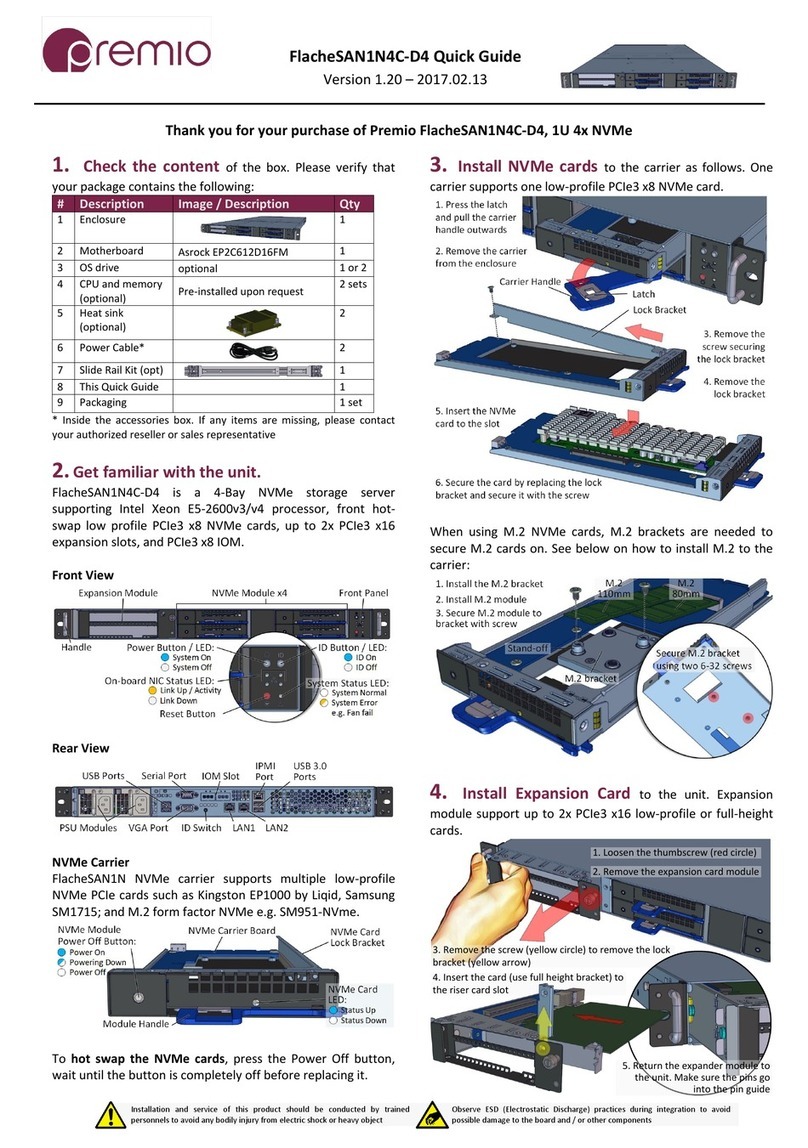
Premio
Premio FlacheSAN1N4C-D4 quick guide
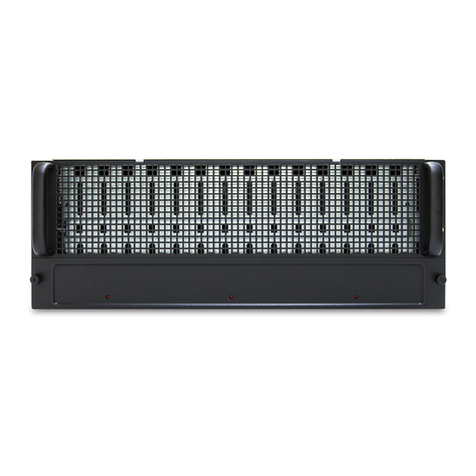
AIC
AIC 12G SAS JBOD Series user manual
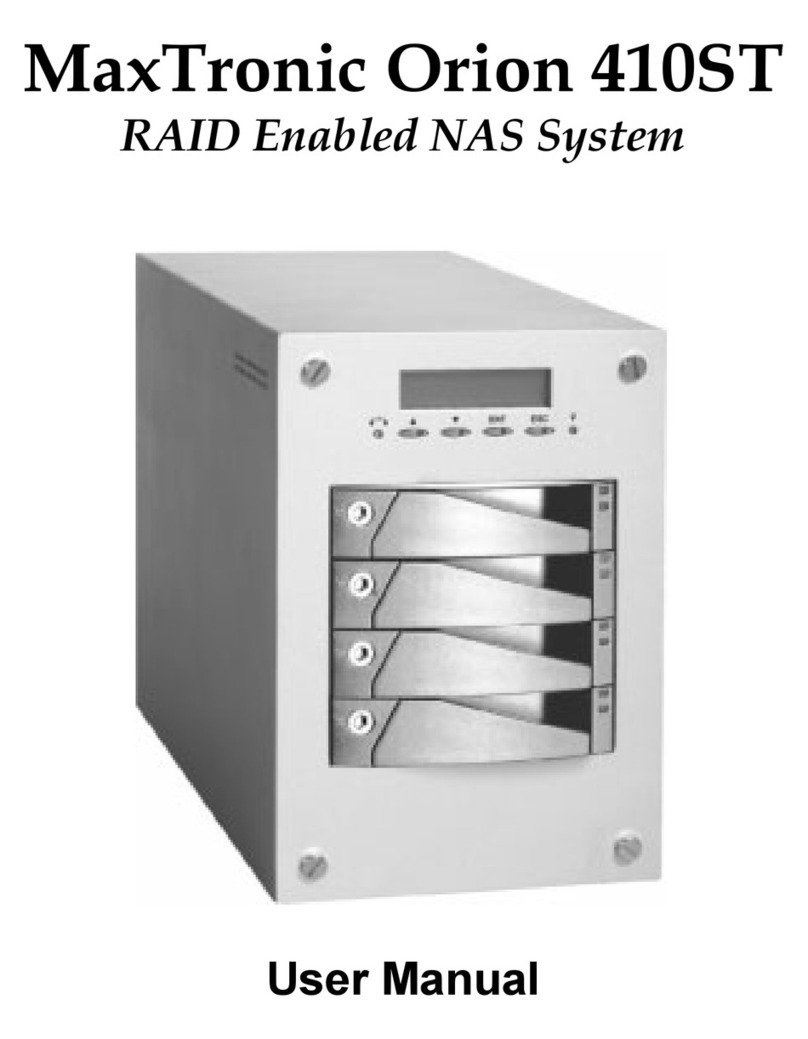
MaxTronic
MaxTronic Orion 410ST user manual
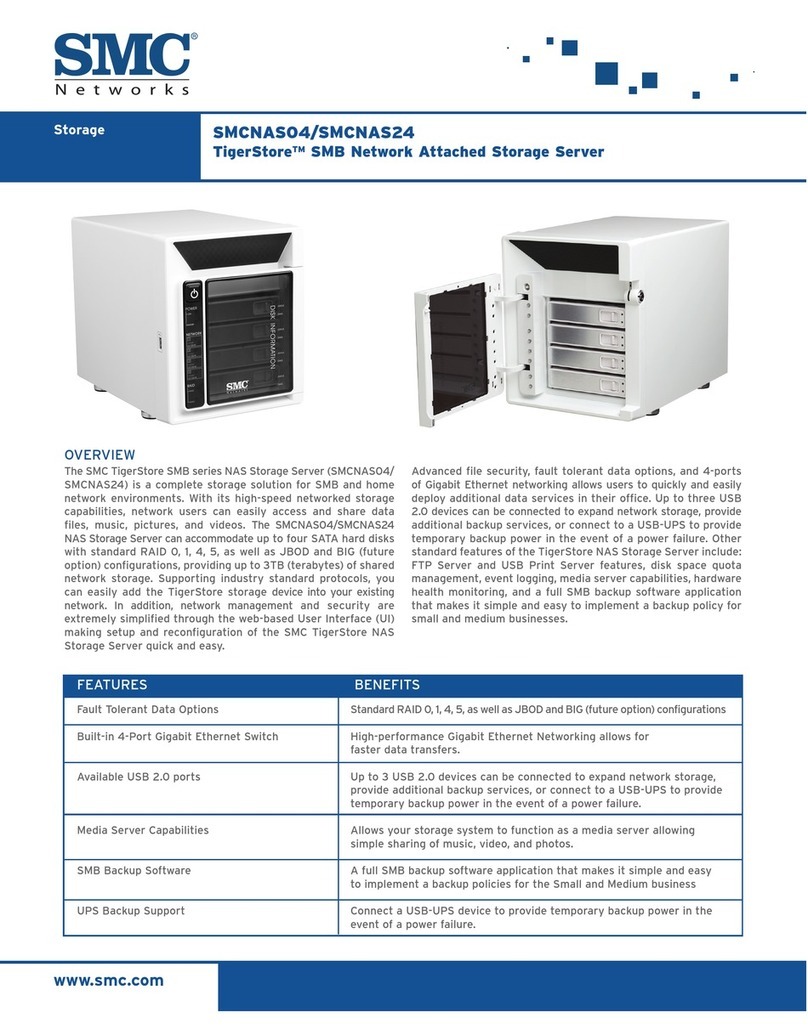
SMC Networks
SMC Networks TigerStore SMCNAS04 Specification sheet
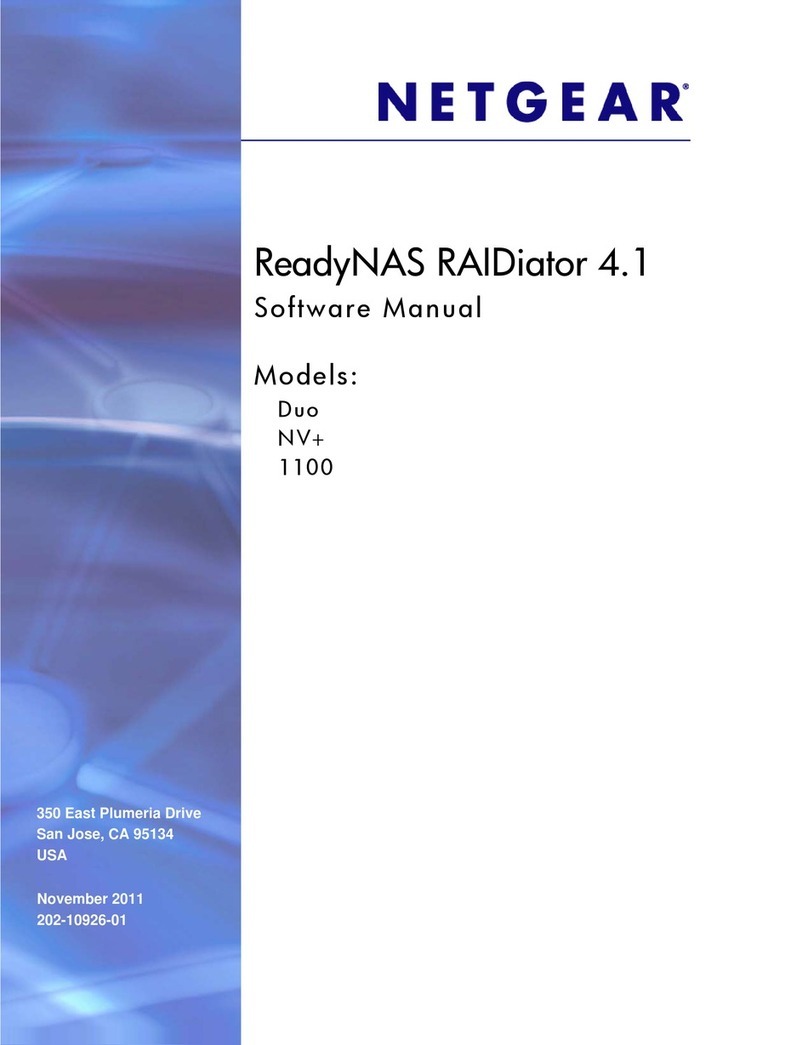
NETGEAR
NETGEAR RNR4410 - ReadyNAS 1100 NAS Server Software manual
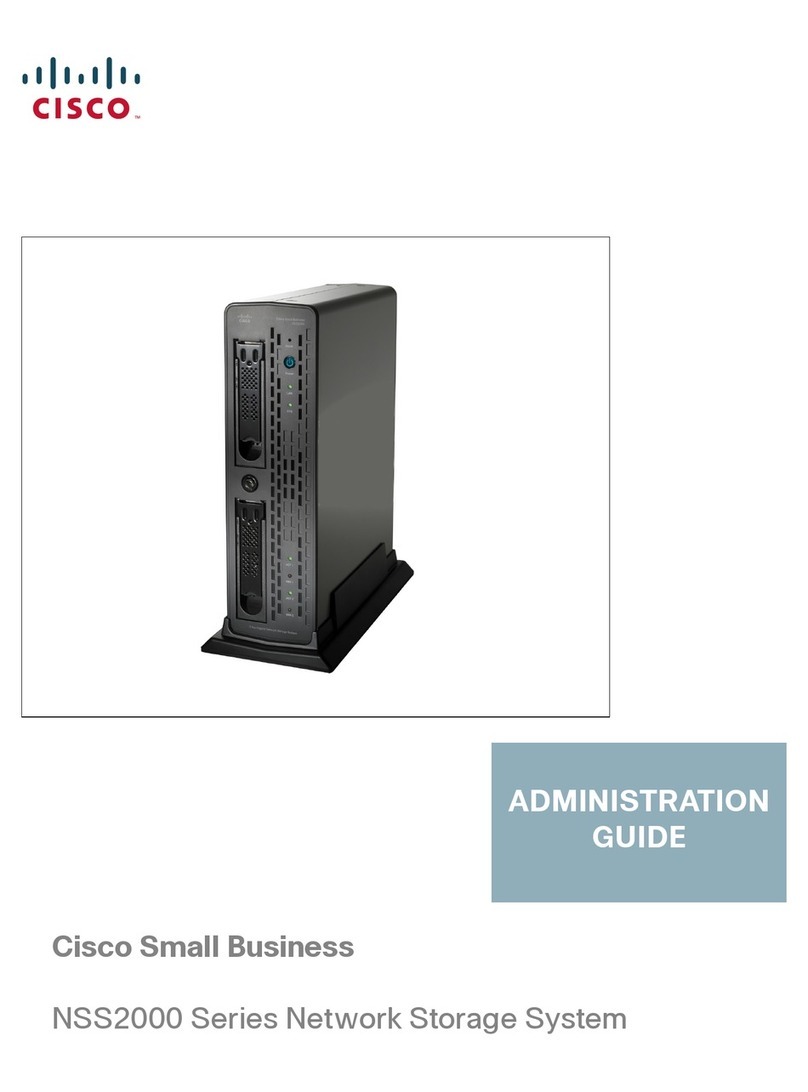
Cisco
Cisco NSS2000 - Gigabit Storage System Chassis Administration guide
